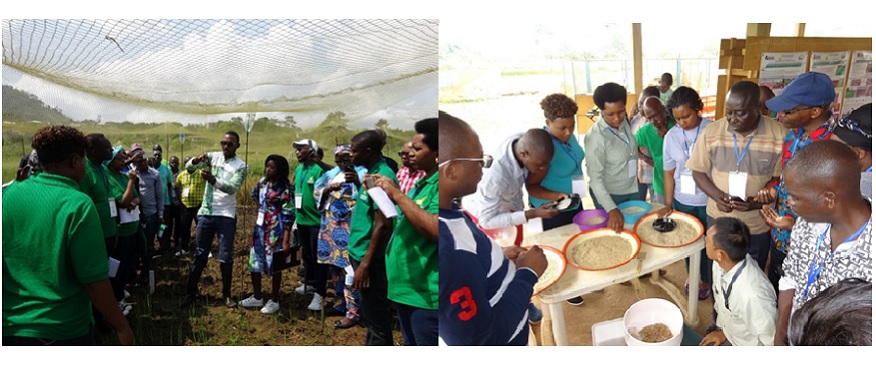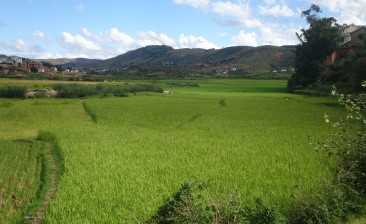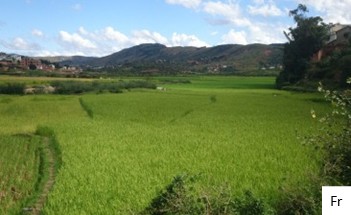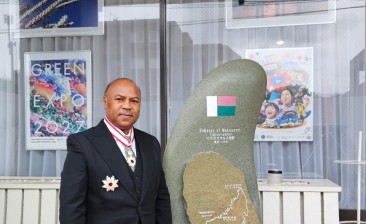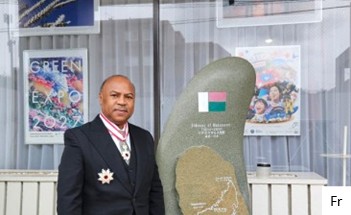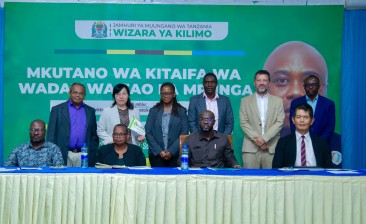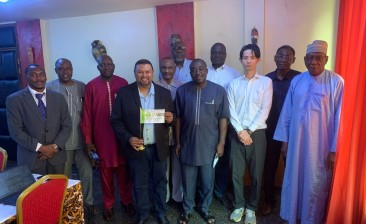Cameroon, December 2019
COURSE REPORT (CARD Regional Training)
MINADER, CAMEROON
| Course Summary | |
| Course title | “Rice Production/Post-harvest Training for Central African countries” conducted in Cameroon. |
| Date | 10th to 13th December, 2019 |
| Beneficiaries | Ministry Management and Researchers |
| Beneficiary countries | Congo, DRC, Chad, Burundi, Cameroon and Gabon |
| Number of participants | 32 participants |
| Facilitators | MINADER and PRODERiP |
| Features of the course | 4 days’ interactive and hands-on/practical training |
- Background
The Ministry of Agriculture and Rural Development (MINADER) of Cameroon together with Japan International Cooperation Agency (JICA) supported Technical Assistance project called PRODERiP (Project for the Development of Irrigated and Rainfed Rice Cultivation) hosted the first CARD regional training in Cameroon. It is a five-day training, from 9th to 13th December 2019, inviting 32 participants from six central African countries, namely Cameroon, Gabon, Congo Republic, Democratic Republic of Congo, Chad and Burundi, all of them are the CARD member countries. MINADER launched the PRODERiP in 2011 and currently its phase 2 has been in operation, to contribute to the target of doubling annual paddy production from the level of 360,000 MT in 2017 to 750,000 MT by 2030.
In the first day of the training, the participants paid a courtesy call to their embassies in Yaoundé, to discuss their objectives to visit Cameroon and also to share the support from the Japanese Government in the rice sector development in each country in the Central Africa region, which was announced at the occasion of TICAD7 (7th Tokyo International Conference on African Development, August 2019).
- Objectives of the training
A. Impart skills and knowledge to participants on productivity improvement
B. Share experience on quality improvement through better post-harvest handling
C. Enhance participants’ knowledge on seed production
- Training Programme
The training programme has been divided into five modules, as follows:
– Introductory module where good practices in harvesting and post-harvest procedures and quality criteria were presented;
– Second module on experience sharing through the presentation by the participants of the situation of the rice sector in their countries;
– Third module on rice production techniques;
– Fourth module on seed multiplication; and
– Fifth module on harvesting and post-harvesting techniques.
At the end of each module, a question and answer session was held to promote better understandings of the participants on the topics.
Following these training sessions, a field visit was organized for observing how the acquired knowledge and skills are utilized on the ground.
The details of the training programme (in French) are illustrated below.
| 09 décembre 2019 |
| Visite de coutoisie à l’ambassade |
| 10 décembre 2019 (1er jour) | |
| 10:00 | Ouverture |
| 11:30 | Module 1 : Présentation Intoductif (1-1) Aperçu du PRODERiP, (1-2) Présentation sur la récolte et post-récolte, (1-3) Présentation sur la qualité et variété |
| 14:00 | Module 2 : Country Report sur le Riz de leur Pays (Inforation générales, statistiques, production, consommation, culture, semence, etc.) (2-1) Burundi, (2-2) République du Congo, (2-3) République Démocratique du Congo, (2-4) Gabon, (2-5) Tchad, (2-6) Cameroun et sa SNDR |
| 11 décembre 2019 (2ème jour) | |
| 09:00 | Module 3 : Culture du Riz Révision / (3-1) Stades de croissance de riz (morphologie, phase végétative, phase reproductive, initiation paniculaire, méiose, épiaison, maturation des grains), (3-2) Composant du rendement (nombre de panicules par poquet, nombre de grains par panicule, taux des grains remplis (%), poids de 1000 grains), (3-3) Observation sur le terrain (chaque stade de développement), (3-4) Relation entre stades de croissance et composante |
| 14:00 | Module 4 : Multiplication de la Semence (4-1) Type de semence (semences souches et semences de pré-base (purification semence incluses), semences de base, semences certifiées, différence entre la maintenance et la sélection (elimination off-type incluses), (4-2) Planification de la multiplication de la semence (calcul de la semence nécessaire) |
| 12 décembre 2019 (3ème jour) | |
| 09:00 | Module 5 : Récolte et Post-Récolte Révision / (5-1) Récolte (bon moment de la récolte, bonne et mauvaise façon de la condition de la récolte), (5-2) Post-récolte (séchage, mauvaise qualité du paddy vs bonne qualité du paddy, cause du riz coloré et de la brisure, (5-3) Décorticage (vérification de la mauvaise qualité du riz blanchi vs bonne qualité du riz blanchi, cause du riz coloré et de la brisure, pratique de décorticage (SB10), pratique du calibrage) |
| 16:00 | Module 6 : Résumé (6-1) Wrap-up / Résumé (pour l’amélioration de la qualité) / Questions générales et Réponses |
| 13 décembre 2019 (4ème jour) | |
| 09:00 | Module 7 : Visite de Terrain Bityili (visite aux champs de multiplication de la semence (semences de base, semences certifiées)), Ebolowa |
